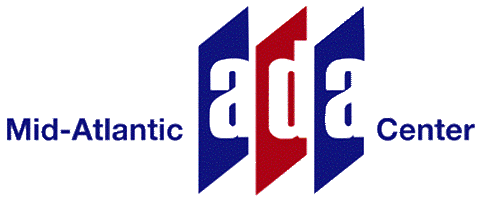(Printer-friendly PDF version | 275 KB)
(Large-print PDF | 206 KB)
(Versión en español)
The Department of Justice (DOJ) issued revised regulations in 2010 under the Americans with Disabilities Act (ADA) for Title II (which covers state and local government programs) and Title III (which covers many private businesses, including twelve types of places of public accommodation). These regulations provide definitions of wheelchairs and other power-driven mobility devices and explain where they can be used. (§35.104, §35.137, §36.104, §36.311)
Wheelchairs
A wheelchair is a manually operated or power-driven device designed for use by an individual with a mobility disability for the purpose of locomotion. Individuals with mobility disabilities must be permitted to use wheelchairs and manually powered mobility aids, such as walkers, crutches, canes, braces, or other similar devices designed for use by individuals with mobility disabilities, in any areas open to pedestrian traffic.
Other Power-Driven Mobility Device (OPDMD)
An OPDMD is any mobility device powered by batteries, fuel, or other engines, whether or not it was designed primarily for use by individuals with mobility disabilities, that is used by such individuals for the purpose of locomotion. OPDMDs may include golf cars/carts, electronic personal assistance mobility devices, such as the Segway ® Personal Transporter (PT), or any mobility device that is not a wheelchair and is designed to operate in areas without defined pedestrian routes.
Public and private entities must make reasonable modifications in their policies, practices, or procedures to permit individuals with mobility disabilities to use OPDMDs, unless the entity can demonstrate that the class of OPDMDs cannot be operated in accordance with legitimate safety requirements.
The decision about allowing a particular OPDMD in a specific facility or area depends on:
- The type, size, weight, dimensions, and speed of the device;
- The facility’s volume of pedestrian traffic (which may vary at different times of the day, week, month, or year);
- The facility’s design and operational characteristics (e.g., whether its service, program, or activity is conducted indoors; its square footage; the density and placement of stationary devices; and the availability of storage for the device, if requested by the user);
- Whether legitimate safety requirements can be established to permit the safe operation of the OPDMD;
- Whether the use of the OPDMD creates a substantial risk of serious harm to the immediate environment or natural or cultural resources, or poses a conflict with federal land management laws and regulations.
What questions may be asked
- Entities may not ask an individual using a wheelchair or OPDMD about the nature or extent of his or her disability. They may, however, ask a person using an OPDMD to provide a credible assurance that the mobility device is required because of a mobility disability, by either:
- Showing a valid, state-issued, disability parking placard or card or other state-issued proof of a disability, or
- Verbally stating that the OPDMD is being used by a person with a mobility disability (as long as the statement does not contradict observable fact).
|
Content was developed by the Mid-Atlantic ADA Center, and is based on professional consensus of ADA experts and the ADA National Network. |
|
|
TransCen, Inc. |
The contents of this factsheet were developed under grants from the National Institute on Disability, Independent Living, and Rehabilitation Research (NIDILRR grant numbers 90DP0089 and 90DP0086). NIDILRR is a Center within the Administration for Community Living (ACL), Department of Health and Human Services (HHS). The contents of this factsheet do not necessarily represent the policy of NIDILRR, ACL, HHS, and you should not assume endorsement by the Federal Government. |
|
© Copyright 2018 ADA National Network. All Rights Reserved. |
|

.png)





